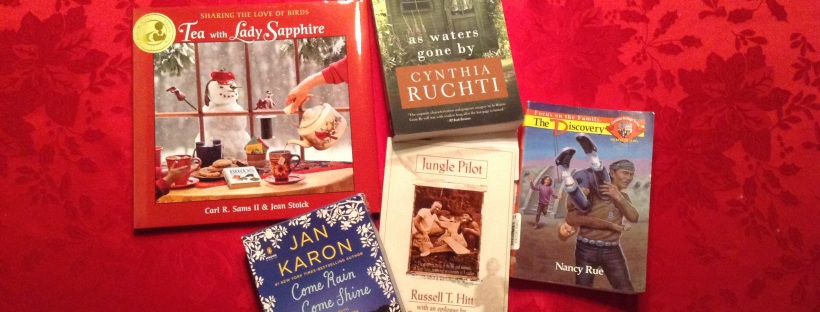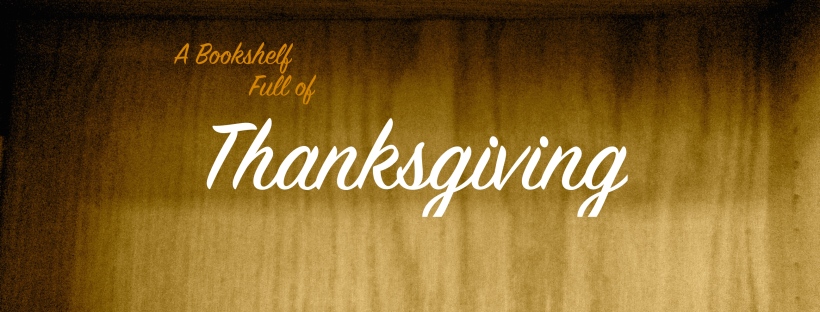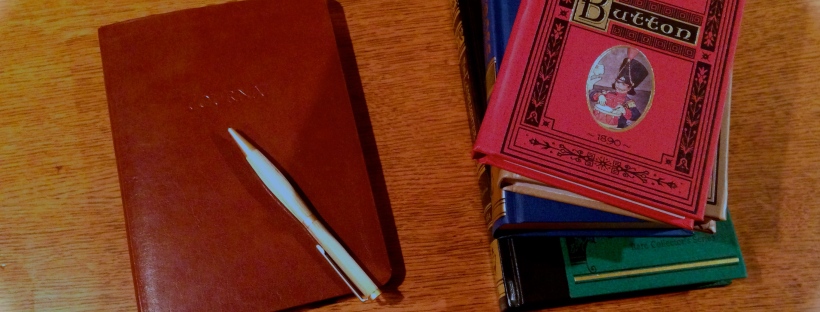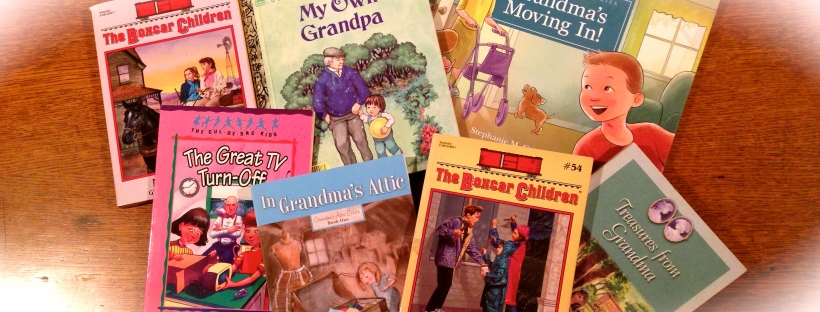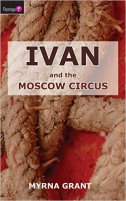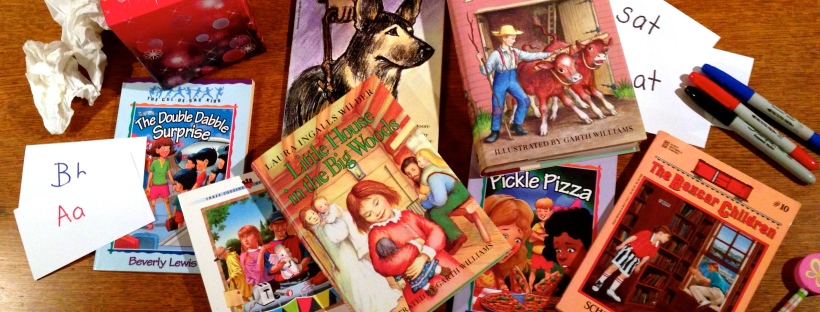Sometimes it’s fun to explore a theme through different books. A while ago, I composed my thoughts on a selection of children’s books that have the theme of “Life with the Elderly”. Whether a grandparent is moving in or there are elderly people in the community, children will cross paths with someone who is “a little bit older”. While this can be a great blessing all around, sometimes children don’t know or feel unsure of how to relate to the elderly. I can empathize because I struggled with this even when I wasn’t so young. Perhaps these books could give someone else a lift in the right direction!
Grandma’s Attic series by Arleta Richardson
Here is a collection of stories to inspire children to seek out tales from those who are a little bit older. With each chapter, venture into a new story passed down to Arleta Richardson by her grandmother Mabel. Be prepared to laugh and learn along the way as Mabel and her best friend Sarah Jane grow up in Michigan over a hundred years ago. Parents will also discover good talking points about the issues Mabel encounters.
I first read these stories when I was about nine years old and later read many of them to a girl I babysat for years. We both loved them! The tales are not only laugh-aloud funny but also truly priceless thanks to the distinctively Christian way in which Grandmother Mabel shares them. (The older editions of this book have larger print. If that is a concern, you can still find them on ebay or Amazon.)
The Cul-da-sac Kids and the Great TV Turnoff by Beverly Lewis
In this book from the Cul-da-sac Kids series, Eric comes up with a big idea: Maybe the Cul-da-sac Kids should join National TY-Turnoff Week! But when everyone decides to join in, going without TV turns out to be a lot harder than Eric thought.
Thankfully, his Grandpa, who lives with Eric and his mom, comes to the rescue. Eric’s family also reaches out to the elderly man who lives at the end of the street…with surprising results!
This chapter book is engaging for young readers and models healthy relationships with older family and community members. And, let’s admit, a little inspiration to go without TV could be a good thing for all of us!
My Own Grandpa by Leone Castell Anderson
Little Andrew has two problems: He is lonely, and he wishes for a nearby Grandpa who could do special things with him. Then his mother takes him to Green Meadows Manor. There Andrew meets people who are all just a little bit older, including Mr. William Barker. You can guess this story’s happy ending.
Although it is not explicitly Christian, I like this Little Golden Book for several reasons. First of all, the story illustrates how children need older people in their lives and vice versa. Then it shows children how to act around the elderly (e.g. Andrew tries to start a conversation and shakes Mr. Barker’s hand when they meet). However, it also recognizes that older people may appear scary to children at first. Lastly, My Own Grandpa demonstrates creative problem solving as Andrew’s mother takes her lonely little boy to meet other lonely people and finds a man who could be like his own Grandpa.
The Boxcar Children #4 Mystery Ranch & The Boxcar Children #54 Hurricane Mystery by Gertrude Chandler Warner
In The Boxcar Children #4 Mystery Ranch, Jesse and Violet head west to care for their Great-Aunt Jane whose health is dwindling and whose contrary nature is driving her housekeeper crazy. At first, Aunt Jane is unfriendly and uncooperative, but Jesse and Violet’s resourcefulness and kindness yield eventually happy results. As in all Boxcar Children adventures, a mystery develops and soon Henry and Benny join the girls at Mystery Ranch to help solve the case!
The Hurricane Mystery (#54 in The Boxcar Children series) finds Henry, Jesse, Violet and Benny on Sullivans Island off the coast of South Carolina. They are there to help an elderly friend of Grandfather Alden’s, Mrs. Ashleigh, repair her home after a hurricane. But what is so special about the gate in front of Mrs. Ashleigh’s house? Could there be some connection to the stories of pirates’ buried treasure? With another hurricane on its way, will the four children be able to solve the mystery in time and will Mrs. Ashleigh be able to keep her home?
While the Boxcar Children’s adventures are not explicitly Christian, these two do reflect an active care both in and beyond one’s own family for those who are just a little bit older. In Mystery Ranch readers can see one picture of what it might be like caring for an (at first) less-than-cooperative elderly person. Mrs. Ashleigh in The Hurricane Mystery is a contrast to Great-Aunt Jane (the grumpy Great-Aunt Jane, that is) because Mrs. Ashleigh herself is very active and engaged in her community, but she still needs help after her home is damaged and the Aldens’ active compassion for her is worthy of imitation. The book also deals with an issue many elderly people face: Mrs. Ashleigh’s son wants her to move out of her home while she doesn’t want to at all! (After seeing how supported she is by her community, her son apologizes and decides she can stay in her own home.) The mystery elements keep the story going. I recommend these two as books that you can talk about with children.
Grandma’s Moving In! by Stephanie M. Cone
This picture book is a delightful tool for showing young children how they can be a blessing in many little ways to their grandparents and other older people. It is especially helpful for families who are in the midst of a grandparent moving in. The Christian perspective and sensitive spirit behind it make it a story worthy of a place on your bookshelf.
There you go! Why not visit the library or the Kindle store, and settle in with a favorite little one to share these stories together?
Your turn! What resources do you use to teach children how to act around the older people in their lives? Or, if you are “a little bit older”, are there things you wish children knew that could help you all get along better?

